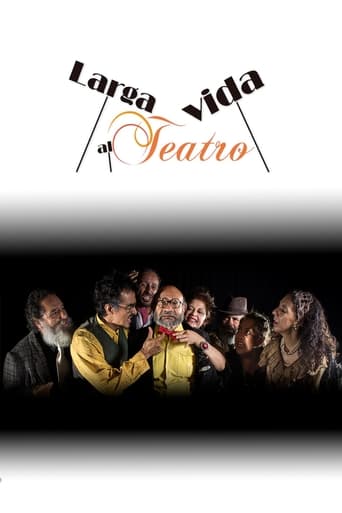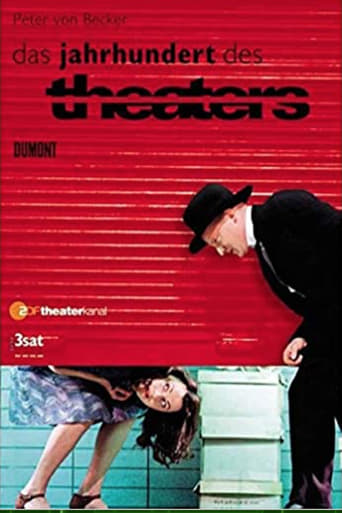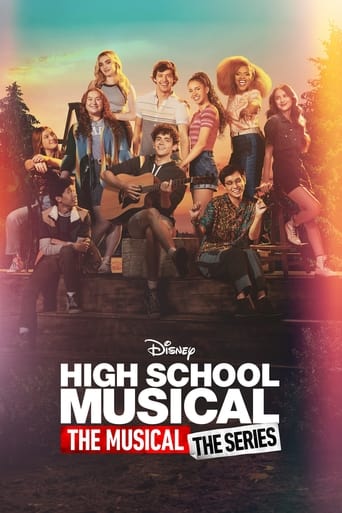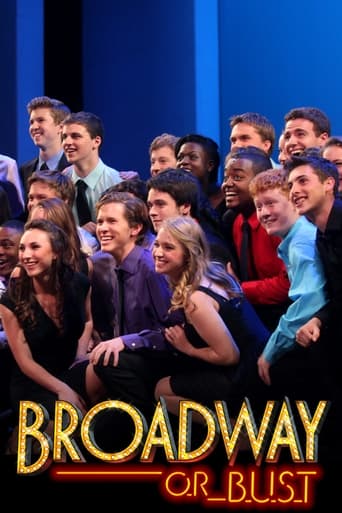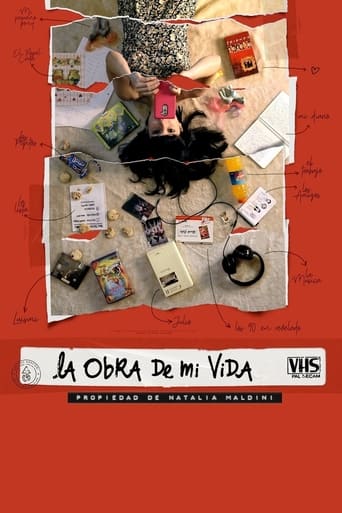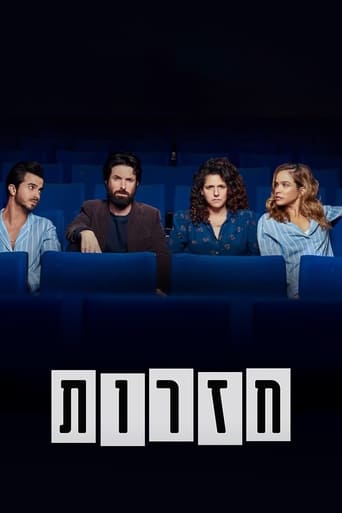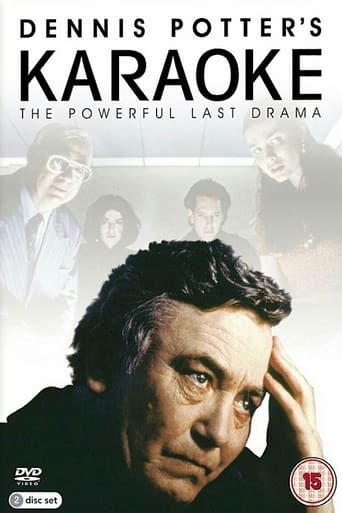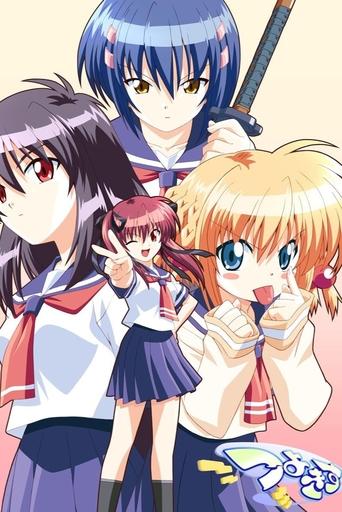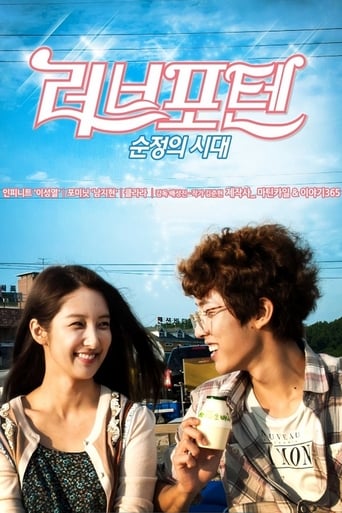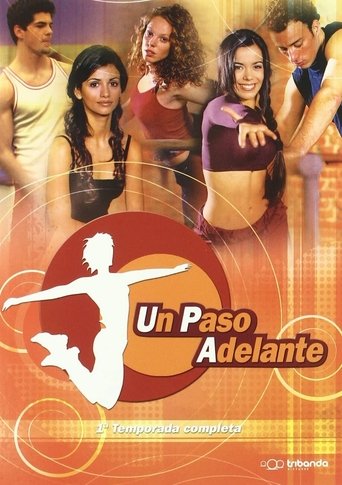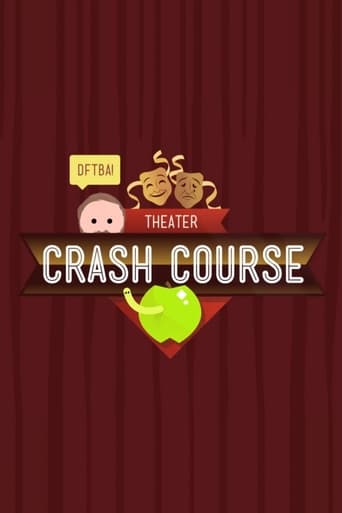
The Rise of Melodrama
At the turn of the 18th century, audience were ready to go over the top, and get some really, really dramatic theater in their lives. Like, a dog dueling a man type of dramatic. In London, only two theaters were licensed, but entertainment entrepreneurs figured out that musical entertainments weren't subject to the same restrictions. So, incidental music was invented, and the melodrama was born. And then switched with another infant. And later tied to train tracks, but rescued at the last minute. And so forth.
Country: US
Language: En
Runtime: 13
Season 1:

Welcome to Crash Course Theater with Mike Rugnetta! In this, our inaugural week, we're going to ask the two classic questions about theater. 1.What is theater? And 2. Is it spelled -re or -er? Well, there's a clue to question two in the title of the video. The first question is a little trickier. We'll look at some of the historical definitions of theater, and investigate some of the ways people have thought about theater in different times and places in the world.

This week on Crash Course Theater, Mike is acting like theater started in Greece. Well, for the western theater, this is true. The earliest recorded drama in the west arose in Athen, and these early plays grew out or religious ritual. Namely, they evolved from the worship of Dionysus, god of wine, fertility, and RITUAL MADNESS. That's right. I said RITUAL MADNESS

Aristotle. He knows a lot, right? And if you choose to believe Aristotle, then you must believe all the mechanics of tragedy that Mike is about to lay on you. This week, we're looking at Aristotle's rules for the basic elements of theater, and how those can be used to bring about catharsis, the emotional release triggered by onstage trauma. You know you love the catharsis.

Get ready for hilarity, because this week, we're diving head first into Greek Comedy. Actually, though, maybe don't get TOO ready for hilarity. Taste in humor has changed a little over the last couple of thousand years. You already know about Greek Tragedies, with their hamartia and catharsis and whatnot. Today we're going to look at how Greek comedy evolved out of those tragedies, first as Satyr plays, and later as full-blown comedies. So come along. There are a few laughs involved, I promise.

Today, Mike Rugnetta takes you from our beginnings in ancient Greek theater, and moves on to the development of Roman theater. Which, it turns out, is A LOT like Greek theater. Because the Romans were real Grecophiles, they modeled their plays on the Greeks.

In which Mike delves into the theater of ancient Rome. It wasn't all gladiators and Christian-killing, you know. There was theater, too. Roman drama drew heavily on Greek drama. So heavily, in fact, that many of the stories and characters were lifted directly from Greek plays. This time around, you'll learn about Plautus, Terence, and Seneca, and just what they owe to Menander.

Ancient Sanskrit theater is one of the oldest theater traditions, and thanks to Bharata Muni and his treatise on theater, the Natyashastra, we can tell you quite a bit about it, all the way down to eyebrow and nostril poses. This week you'll learn about the drama of ancient India, and its connection to the Mahabharata and the Ramayana.

As the Roman Empire fell, so did the theater. If there's anyone who hates theater and actors more than Romans, it's early Christians. As Christianity ascended in the west, theater declined. But, fear not. This isn't the end of the series. Theater would be back, and in the best subversive theater-y fashion, it would return via the Catholic mass!

When last we saw Theater, it was just making its way back in the West, by sneaking a little drama into the Easter mass. In today's episode, we're talking about Hrotsvitha, the cool 10th century nun from Lower Saxony who was maybe the first playwright of the new era of theater. She wrote comedies with a moral message, and influenced future heavy hitters like Hildegard of Bingen.

Not long after drama reappeared in the unlikely home of European churches, the church decided again it didn't like theater. And so, the budding dramatic scene was kicked out into the harsh elements of the outdoors. So, they started having plays outdoors. Today we'll learn about mystery plays, cycle plays, pageant wagons, and how medieval European theater moved from being a religious phenomenon to a secular one.

This week on Crash Course Theater, Mike is taking you to Japan to have a look at Noh theater. Noh, and its counterpart Kyogen are some of the most revered theater forms in Japan, and are still performed today. Today you'll learn how Noh grew out of traditional Shinto dances, what a Noh theater looks like, and how audiences managed to sit through 8 hour performance in the days before memory foam theater seats. (hint: it was the Kyogen)

This week, we're going to Italy for a Renaissance. The Middle Ages are over, and it's time to talk about the flourishing of art and humanism across Europe. Painting, sculpture, music, architecture, and plays with fart jokes were all thriving between from 1300 - 1500, and we're going to teach you about the theatrical aspects of that flourishing, as it happened in Italy.

The Renaissance came to England late, thanks to a Hundred Years War that ran long and lasted 116 years, and then a civil war to decide who would be the royal family. BUT after all that, with the Tudors (relatively) securely installed on the throne, there was a flowering of humanism, science, and culture. Theater was a big part of it. Today, we're talking about the London theater scene and the playwrights that set the stage...ahem...for the main man of English Theater, William Shakespeare.

This is the story of how a young Englishman named William Shakespeare stormed London's theater scene in the late 16th century, and wrote a bunch of plays and poems that have had pretty good staying power. We'll learn about Shakespeare's beginnings, his family, and how he broke into theater

Shakespeare's tragedies...were tragic. But they had some jokes. They also changed the way tragedies were written. Characters like Hamlet, Macbeth, and King Lear had tragic outcomes, but they were sympathetic characters in a lot of ways. This was a big change from the way Seneca and the Greeks wrote tragedies, and it caught on.

This week we're continuing our discussion of William Shakespeare and looking at his comedies and romances. As well as something called problem plays. Some of his plays, they had problems. We'll also put on pants, escape to forest, and talk about Shakepeare's heroines, lots of whom had quite a bit more agency in these plays than the women in the tragedies had.

This week on Crash Course Theater, Shakespeare is dead. Long live Shakespeare. Well, long live English theater, anyway. Actually, it's about to get banned. Anyway, we're discussing where English theater went post-1616. We'll talk about Ben Jonson, revenge tragedies, and court masques.

The English Theater survived a lot of pushback from various powers that be, but in the 17th century, it had to go into hiding, from PURITANS. Let's take a look at how the English Civil War, Charles I's beheading, and the Restoration of the monarchy all had effects on the English Theater. Also, not to bury the lede, but WOMEN finally make it to the English stage in this episode. Plus, Restoration comedies are pretty smutty, so you should hang on 'til the end of this one.

This week on Crash Course Theater, Mike and Yorick take us to beautiful Spain and look at its Golden Age. Spain was having kind of a moment in the 16th and 17th centuries. They had this big empire, the culture was really flowering, and Humanism was popping up all over, but they also had the inquisition. Into this world came prolific writers like Felix Lope de Vega and Pedro Calderon de la Barca. And they wrote a ton of plays.

Everyone knows, you need a bunch of rules to make good theater. That's what the French thought in the 17th century, anyway. The French Neoclassical revival had a BUNCH of French playwrights following a bunch of rules. Unsurprisingly, some of the most interesting plays of the era broke those rules. Today, we'll talk about the rules, and we'll talk about Racine (who followed them), and Corneille (who was not so much a rules guy).

This week on CC Theater, Mike Rugnetta teaches you about the greatest playwright of Renaissance France, Moliere. We'l talk a bit about early French theater design, and the kingly love of theater that Louis the XIII and XIV shared, and look at Moliere's Tartuffe in the Thought Bubble.

This week, we're headed to the Americas to learn about the theater that existed there prior to the arrival of Europeans, how the theater of the Spanish influenced it, and the impact of Sor Juana Inez de la Cruz, playwrighting Spanish nun extraordinaire.

We're headed back to Japan, this time in the Edo period to follow up on Noh theater, which had gone out of style last time we checked in. Now, under the Shoguns, there's couple of really interesting types of drama on the scene. Kabuki is a sort of successor to Noh, with wilder stories and more action. And Bunraku is straight up high intensity puppet theater. Mike tells you all about how the Samurais got themselves into trouble watching bawdy theater shows in Edo.

This week, we're headed back to India to learn about the all night dance shows that culminate in killing a Demon (metaphorically): Kathakali! This form arose in the Kerala region of India, and tells traditional Indian stories, but with really remarkable makeup, hand positions, and dance moves.

This week we're headed to China to learn about the ancient origins of theater there. We'll look at the early days of wizard theater (not a typo), the development of classical Chinese theater, and the evolution of Beijing Opera.

This week, we're headed back to England to learn about Sentimental Comedies. They weren't that funny, but they were definitely sentimental. The people of England were shaking off the Restoration hangover, and bawdy plays no longer had a place. In fact, there wasn't a place for much of any drama, as only two theaters were licensed to present plays. Rules and regulations everywhere, y'all.

Theater had a slow start in Germany, mainly because Germany wasn't really a thing until relatively recent times. After Germany finally became a unified state, it had a couple of really important theatrical movements. Today we'll talk about Sturm and Drang, as well as Weimar Classicism. We'll also get into the work of the greatest German playwright, Goethe, and look at his play Faust in the Thought Bubble.

At the turn of the 18th century, audience were ready to go over the top, and get some really, really dramatic theater in their lives. Like, a dog dueling a man type of dramatic. In London, only two theaters were licensed, but entertainment entrepreneurs figured out that musical entertainments weren't subject to the same restrictions. So, incidental music was invented, and the melodrama was born. And then switched with another infant. And later tied to train tracks, but rescued at the last minute. And so forth.

It's lights up in America! This week, we're headed to North America. We'll look at Native American storytelling traditions, the theater that Europeans brought along starting in the 17th century, and how theater developed before and after the American Revolutionary War. Also, a terrible Macbeth rivalry which culminates in a full blown theater riot.

We’re continuing our discussion of nineteenth-century American theater with a look at some upsetting parts of the US's theatrical past. In the nineteenth century, race and racism contributed to a unique and troubling performance culture, which helped create and spread racist stereotypes that are still with us today. And just - to be super clear - the stuff we’re talking about in this episode is … tough. The images are upsetting, and much of the language is … fraught, to put it lightly. So, just an up front content warning, so you know what’s coming up.

This week, we're back in Europe to learn about Realism and Naturalism. In the 19th Century, playwrights like Eugene Scribe, Alexandre de Dumas Fils, and Emile Zola remade the French theater, first with Realism, and later with Naturalism. What are those things? Watch and learn.

In the late 19th and early 20th centuries, theater was evolving rapidly in Europe. Impresarios like Georg II, Duke of the Duchy of Saxe Meinengen (in what is now Germany), were pushing theater troupes to new heights of realism. New methods of staging, acting, set building, and even rehearsing were making plays more realistic than ever. These practices spread to France with Andre Antoine's Theatre Realisme, and from there spread across Europe.

It's a Scandinavian grudge match on Crash Course Theater. We're looking at a couple of the key movements in European theater that deeply influenced the modern theater of today. We'll take a close look at two of the most radical and influential European playwrights of the 19th century, who just happened to be mortal enemies. Henrik Ibsen of Norway, and Swede August Strindberg reshaped theater, between bouts of hating each other.

Get ready for Russian modernism. Mike is teaching you about the playwrighting of Catherine the Great, Anton Chekhov's plays, the Moscow Art Theater, and the acting theories of Stanislavski. It's all very real, and very modern. From a Realism and Modernism perspective.

Prepare to be horrified, and to look into the face of inhumanity with the Grand Guignol. Mike Rugnetta teaches you about one of theater history's most horrible chapters. The Grand Guignol was a French theater based in Paris from the late 19th century until 1962. The troupe, led by writers like Andre de Lorde and Alfred Binet put on dark, violent, bloody shows that were a precursor of the horror media that we love to consume today. You'll learn about stage effects, makeup, and maybe even why humans like to stare into the darkness and terrify themselves.

The Irish Renaissance in the early 20th century included a wealth of new plays written both in Ireland, and by Irish ex-patriots elsewhere. W.B. Yeats, Lady Augusta Gregory, and J.M. Synge were creating a new national theater of Ireland at the Abbey Theatre. They often drew their stories from the fabric of Irish life. Oscar Wilde and George Bernard Shaw were meanwhile writing important (and often hilarious) works on the world stage.

Watch. Dime. Develop. Powder. Pantry. Dirt. That's right, it's time for a dip into the random, because we're talking about the Dada theater that grew out of Symbolism, and the Surrealist theater that followed Dada. You'll learn about Maurice Maeterlinck, Paul Fort, Lugne Poe, Andre Breton, and Alfred Jarry and his infamous play, Ubu Roi. Along the way, you'll pick up lots of interesting facts. For instance, Jarry's favorite cocktail was made up of absinthe, vinegar, and ink. We don't want to boss you around, but do not ever drink anything like that.

Join us here, in the darkness. Our theater journey takes us into the heart of expressionism today, as playwrights in the late 19th and early 20th centuries explored the limits of human beings' tolerance for a mechanized, industrial world. Spoiler alert: those playwrights didn't think humans fared very well in the industrialized world. They EXPRESSED that concern about modernity through some pretty dark plays, with pretty dark sets, and pretty dark content.

It's time to go Back...to the Future. By which I mean, we're going back into the past to talk about Futurism. Which seems like it would be cool, but it was started by this terrible guy Martinetti, who also wrote the Italian Fascist manifesto. He was just the worst, but, at least he was the worst in a way that makes a pretty compelling video. We'll also check in with the Russian theater, and learn about generally nicer Futurist Vsevolod Meyerhold, who also was vey influential in constructivism. So get ready to fire up the meaning machine and learn!

In the early 20th century United States, big melodramatic productions were on Broadway, and everywhere across the country. Which inevitably led to an Avant-Garde backlash. An interesting part of the backlash was Little Theater, a movement that embraced smaller, more emotional, and less profitable forms of drama. One of Little Theater's most notable practitioners, Eugene O'Neill changed the theatrical landscape with groundbreaking plays like The Iceman Cometh and Long Day's Journey into Night.

In the 1920s, there was a blossoming of all kinds of art made by African Americans in the New York neighborhood Harlem. Let's call it a renaissance. While all the arts were having a great run, some extremely interesting things were happening in the theater. Writers like Langston Hughes and Zora Neale Hurston were writing plays, and black theater companies were drawing larger audiences than ever before.

The 1930s in the United States were pretty bad for employment in all industries, and the theater was no exception. As part of Roosevelt's New Deal, the Works Progress Administration created a division called the Federal Theatre Project. The agency created theater companies across the country to put actors and crew back to work in the theater industry. The shows were free, and thanks to forward thinking administrators, a lot of them were pretty interesting. You'll also learn about the Group Theater today. They're the super-influential troupe, with the totally lame name.

I don't mean it mean, but today we're going to be cruel. It's the fun-loving Theater of Cruelty, which was pioneered by the genius Antonin Artaud in France during the inter-war period in twentieth century. The Theater of Cruelty was meant to force an audience into looking at the ridiculous illusions of their bourgeois lives. Is it entertaining? Not always. Was it hugely influential? Absolutely.

Are you ready to learn something about the world? Then you're ready for Bertolt Brecht, and his ideas about Epic Theater. Brecht wanted to lean into the idea of theater as a tool to upset and educate the world about stuff like the struggles of the working class and the problematic aspects of capitalism. He wanted to SHOCK people into seeing the world as it is and taking action, rather than merely entertain audiences. But, he messed up, and wrote some pretty entertaining stories, with some really catchy music integrated into it. And do, people ended up whistling Mack the Knife instead of throwing off the shackles of an oppressive social order. To be fair, it is a catchy tune. Today you're going to learn about Brecht, Epic Theater, and a little bit about the House UnAmerican Activities Committee. Because those jerks hauled Brecht up in 1948 to shake him down about whether or not he was a communist.

Get ready to get weird. Mike Rugnetta teaches you about the Theater of the Absurd, a 1950s theatrical reaction to the dire world events of the 1940s. You'll learn about Jean Genet, Eugene Ionesco, Samuel Beckett, and the theatrical movement that left us all Waiting for Godot.

We're going to Broadway, everybody, and it's not going to be that fun. In fact, it's going to be a very serious experience with lots of powerful social commentary and indictments of life in America in the 1950s. So be prepared to look at the works of Tennessee Williams, Arthur Miller, and Lorraine Hansberry, and to look into the face of chronic illness, racism, and the crushing malaise of American middle class life. Woof.

By the middle of the 20th century, the epicenter of American theater, the Broadway theater district in New York, was getting to be a pretty staid and commercial place. There was a lot of money to be made from prestige plays and dancing revues, and the was no room in the relatively few theaters for edgy, non-commercial work. Enter Off Broadway.

Poor Theater and Theater of the Oppressed were two sort of concurrent movements that shared some of the same aims. Jerzy Grotowski's Poor Theater eschewed the use of lighting, props, costumes, makeup, and many of the other trappings of "rich" theater. Augusto Boal's Theater of the Oppressed in Brazil challenged the ideas of how plays were written and performed, and blurred the lines between actors and audiences.

It's difficult to talk about African theater thanks to colonialism. Pre-colonial Africa was home to many spoken languages, and not nearly as many written languages. The chain of oral tradition was broken by colonial policies, and so many pre-colonial traditions are lost. Today, we're going to talk about some of the dance and theater traditions of Africa, and look at post-colonial theater across the continent.

This is it! We're going out with a singing, dancing look at the Broadway Book Musical. Oklahoma! On the Town! Annie Get Your Gun! Also, just Annie! Today you'll learn about the development of the Broadway Book Musical in the late 19th and early 20th centuries, and get a sense of how the form developed through the Golden Age of Broadway.


